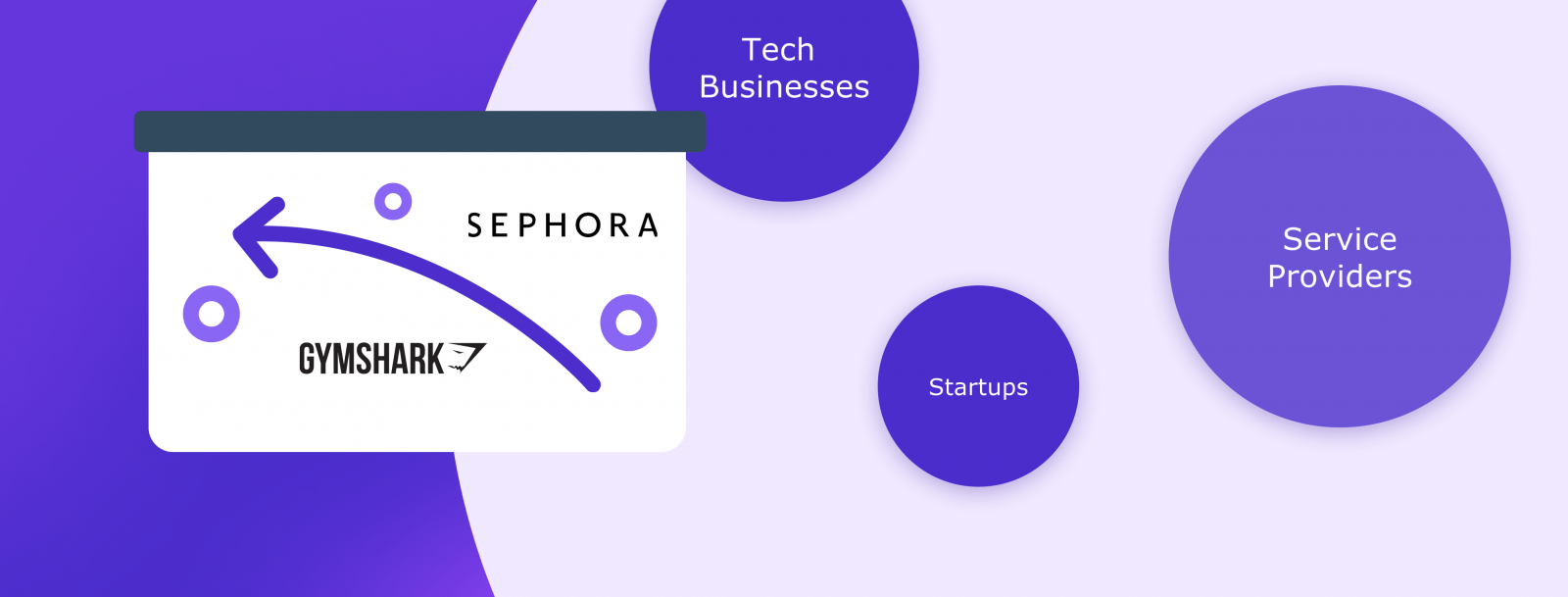Table of Contents

Welcome to the exciting world of e-commerce website optimization! In today's fast-paced and competitive environment, it's crucial to understand consumer behavior and keep up with technological advancements to stay ahead.
In this article, we'll cover the essentials of optimizing an e-commerce platform and share valuable insights. We'll analyze the successful strategies of Gymshark and Sephora and show you how to apply their techniques to your online business.
So, let's dive in and explore the best ways to optimize your commerce sales!
Get 10% Discount on Your First Order at Contenteam!
Current State of Electronic Commerce
The digital marketplace is experiencing explosive growth that is reshaping the world of commerce. This transformation results from multiple factors, including technological advancements, changes in consumer behavior, and an increasing level of comfort that comes with online shopping. With the rise in global internet access and adoption, the number of people shopping online has increased significantly. The estimated worldwide retail e-commerce sales for 2022 surpass 5.7 trillion U.S. dollars, which is expected to rise even further and go beyond 6 trillion by the end of 2023.
The Growth of E-commerce Platforms and Consumer Behavior Shifts
We all know that e-commerce has transformed the way we shop. With online marketplaces, we can buy anything from anywhere, at any time. But have you ever thought about how e-commerce websites have become the new town squares? It has become the norm to shop online, and the modern consumer demands a seamless experience; from discovering products and services, paying for them, and getting them delivered, the entire process must be effortless and hassle-free.
The Millennial and Gen Z cohorts drive the shift in consumer behaviour. These shoppers are well-informed, socially connected, and value authenticity and personalization. They are not just buying products but investing in stories, communities, and sustainability. Social commerce is a perfect example of how social media and e-commerce merge seamlessly. Brands are no longer just selling products or services; they engage in dialogues, making each customer a part of their narrative. So, if you're an entrepreneur looking to enter the e-commerce business world, it's essential to understand the demands of the modern shopper and how to create an engaging shopping experience.
The Impact of Technology and Mobile Optimization on E-commerce Industry

Suppose we're talking about the technological advancements that are revolutionizing online sales. The mobile optimization trend is leading the way, with statistics indicating that most users prefer to use their smartphones for shopping. Did you know that smartphones ruled the roost in the first quarter of 2023 by accounting for a staggering 74% of all e-commerce site traffic worldwide? Not just that, they were also responsible for generating a whopping 63% of all online transactions. Mobile commerce is already dominating the e-commerce sales market, and it is expected to grow even more. From responsive design to mobile apps that offer an immersive and interactive experience, technology is making shopping more convenient than ever.
The future of online retail sales is also shaped by emerging technologies such as augmented reality (AR) and virtual reality (VR). These tools are bridging the gap between the physical stores shopping and online retailers, providing new ways for customers to visualize real-life products. For example, Wizart provides a showroom-like augmented reality (AR) experience for online businesses. This allows their customers to see how all decor products can be applied to walls, floors, and even ceilings. Wizart created an interactive visualization of murals and wall stickers on walls, which enables users to drag-and-drop products and create unique interior designs.
AI-driven personal assistants also transform the online shopping experience by delivering personalized recommendations, smart searching and instant chatbot assistance. Tools like Clerk.io or Luigi's Box are examples of AI-driven solutions to enhance online retail experiences for your customers.
It's clear that the retail sales landscape is evolving rapidly. The e-commerce businesses that not only adapt but also anticipate and innovate in line with these changes are the ones that will thrive. In the following sections, we'll examine the success stories of two business to consumer brands that have not only adapted but also redefined ecommerce sales with their forward-thinking approaches: Gymshark and Sephora.
The Importance of Optimizing E-commerce Platforms
In the digital age, optimizing online sales is crucial for e-commerce business success. It leads to greater visibility and higher conversion rates, allowing businesses to survive and thrive in a crowded and competitive marketplace.
Optimization is the art and science of making your online presence as effective and efficient as possible. It's about fine-tuning your online store to appear as the answer to your customers' searches. The higher your visibility, the more traffic you draw and the greater the likelihood of turning browsers into buyers.
CRO is vital for improving sales by converting existing traffic. It involves customer data analysis, understanding user behavior, and making data-driven decisions to enhance the performance of an e-commerce store.
Here are some purely technical aspects you want to consider when optimizing your digital marketplaces:
Improve Website Speed and Performance

In the age of instant gratification, website speed is currency. A slow-loading page is a surefire way to increase bounce rates and lose potential sales. Based on the page speed report by Ubounce, nearly 50% of consumers tend to refresh a website page at least once if it takes more than 3 seconds to load. However, about 22% of them may choose to close the tab, while 14% may prefer to visit a competitor's site. Optimizing your website's speed across all devices is paramount. This means minimizing file sizes, reducing server response times, and using content delivery networks to ensure your website is lightning-fast, no matter where your customers are. This same Ubouce study found that 56.6% of 542 respondents would give up animations, and 52.8% would give up videos for faster loading speed.
Improve Website Speed and Performance
Your website's design is crucial as it creates the first impression of your brand on customers. It should be visually appealing, easy to navigate, and focused on guiding users towards purchasing. When making design decisions, keep the user in mind and ensure every element serves a purpose. A clutter-free design that prioritizes showcasing your products can encourage conversions. According to research conducted at Stanford University, the design of a website is the top factor for 46,1% of people when determining a company's credibility. Therefore, having a professional-looking design is crucial.
Implement Clear Call-to-Action

A call-to-action (CTA) is the signpost on the path to purchase. It needs to be clear, compelling, and strategically placed. Whether it's "Buy Now," "Learn More," or "Subscribe," your CTA should stand out and be consistent with the tone of your brand. Test different colors, positions, and messages to determine what resonates best with your audience and drives action. Did you know that optimizing your website's CTAs can significantly boost your sales? Here are some compelling statistics to prove it:
CTAs on the landing page can increase conversion rates by 80%
Relevant and well-placed CTAs can increase revenue by 83%
Effective CTAs can increase site and product sign-ups by 34%
Create High-Quality Product Pages
Your product pages are where the conversion magic happens. They should provide all the information a customer needs to make an informed decision. This includes high-resolution images, detailed descriptions, specifications, price, and availability.
High-quality images are key to success in the online marketplace. They can:
Attract attention: Eye-catching images can help your product stand out from the competition.
Build trust: High-quality images give customers a better understanding of your product, increasing their trust in your brand.
Increase desire: Multiple images showcasing your product's features and benefits can create a sense of urgency and increase sales conversions.
Enhancing product pages with videos, 360-degree views, and user-generated content can also significantly boost conversion rates.
Utilize Customer Reviews and Testimonials

Customer reviews are powerful tools that enhance your brand's credibility. Displaying them on your product pages, during the checkout process or on social media platforms can drive online purchases. Trustmary team conducted a study and found that displaying customer reviews on websites led to a 67% increase in eCommerce conversion rates compared to those who did not view reviews. Furthermore, the conversion rate for service bookings increased by 29%, and contact requests increased by 22%.
Offer a Seamless Checkout Process
A complicated checkout process can be frustrating for buyers. It feels like jumping over hurdles to purchase something, and that's not enjoyable. One effective way to reduce cart abandonment is by streamlining the checkout experience. This can be achieved by offering guest checkout options, providing a progress indicator, and giving clear instructions at each step. Remember, the easier it is to buy, the more likely people are to complete their purchase.
According to a study, the main reasons for cart abandonment during the checkout process in the United States in 2023 were:
Too long/complicated checkout process (18%)
Website errors or crashes (14%)
Lack of payment methods (11%)
Implement Live Chat Support

Live chat support can be crucial for customers with questions or concerns. It provides them instant assistance and can help guide them towards purchasing. By being responsive and helpful, live chat support can increase customer confidence, reduce bounce rates, and ultimately improve conversion rates.
Personalization and Recommendation
Personalization is key to creating a shopping experience that customers will remember. By providing personalized recommendations, you demonstrate to your customers that you comprehend their requirements and appreciate their time. You can use their browsing and purchase history to suggest products that genuinely resonate with them. Personalization can increase customer loyalty and a more excellent average order value.
By implementing these strategies, you can optimize your e-commerce website to meet your customers' needs better, leading to improved visibility, enhanced user experience, and increased conversion rates. The tips provided here are a roadmap to e-commerce business success. Keep iterating and improving, and watch your retail e-commerce sales reach new heights.
Unveiling Success Stories: Gymshark and Sephora
Now, after learning a few things about the technical optimization of an e-commerce website, let’s cover some other techniques following examples of big brands.
Gymshark and Sephora are among the most successful e-commerce businesses that have made a mark in the industry with their unique approaches, well-planned strategies, and strong customer connections. Despite the competition, they have become icons in their respective fields, and their journey offers valuable insights for businesses looking to make it big in the online marketplace.
Gymshark's Ascent: A Blueprint for Modern E-commerce Businesses

Gymshark is more than a fitness brand. It's a vision that Ben Francis and Lewis Morgan brought to life in 2012 with a website domain and a clever drop-shipping strategy. They started with supplements but soon expanded to apparel and accessories that inspire millions of athletes worldwide. Gymshark is the result of passion, innovation, and hard work.
Some of Gymshark's Strategies:
Community and Influencer Engagement: Gymshark recognized the power of social media early on. Instead of traditional advertising, they invested in relationships with fitness influencers who resonated with their target audience. This approach amplified their brand and created a loyal community of followers.
Event Marketing: Gymshark leveraged events like the BodyPower Expo to create buzz and establish a physical presence that complemented their online strategy. These events became a platform for them to connect with fans and showcase their commitment to the fitness community.
Selective Discounting: By offering sales only twice a year, Gymshark created a sense of urgency and exclusivity that drove customers to purchase without devaluing the brand.
Sephora's Consumer-Centric Approach in Beauty Retail

Sephora, on the other hand, has been a disruptor in the beauty industry since 1970. With its forward-thinking approach, Sephora embraced that Millennials and Gen Zers interact with beauty brands in a fundamentally different way compared to previous generations. Their focus on personalization, experience, and community has earned them a revenue of $10 billion in 2019 and solidified their position as a global beauty leader.
Sephora's Strategy:
Experiential Retail: Sephora revolutionized the in-store experience with personalized services, tutorials, and makeovers, making every visit to their stores an event in itself. They understood that today's consumers seek experiences, not just transactions.
Omnichannel Approach: By combining their physical and digital retail teams, Sephora created a seamless customer experience that aligned their in-store experience with their online presence.
Authenticity in Marketing: Sephora's shift towards genuine storytelling through authentic influencers and diverse campaigns resonated with consumers who value transparency and inclusivity.
Strategies for the Ambitious: Learning from the Leaders
Here are a few takeaways from the previous cases to succeed in today's market:
Understand Your Audience: To tailor their products and marketing strategies effectively, businesses must invest in market research and customer feedback. Gymshark and Sephora are great examples of brands that deeply understand their target customers.
Build a Community, Not Just a Customer Base: Engaging with customers on a personal level can create a loyal community that will advocate for your brand. This means responding to customer feedback, providing valuable content, and fostering a sense of belonging.
Prioritize Experience: The human touch becomes even more valuable in a digital world. Creating memorable experiences, both online and offline, can set a brand apart. This can include personalized messaging, intuitive website navigation, and exceptional customer service.
Embrace Omnichannel: Consumers no longer see a distinction between online and offline shopping. An integrated approach that provides a consistent brand experience across all platforms is essential. This means optimizing your website for mobile devices, utilizing social media for customer engagement, and offering in-store pick-up options.
Be Authentic: Authenticity in marketing can forge a stronger connection with consumers. In an age of scepticism towards advertising, genuine storytelling and representation can earn customer trust. This means being transparent about your brand values, showcasing diverse voices in your marketing materials, and avoiding "greenwashing" or other misleading tactics.
By understanding and applying these strategies, businesses can find their own paths to success in the world of digital marketplaces. Gymshark and Sephora are proof that with the right approach, brands can not only meet but exceed customer expectations and thrive in the competitive world of commerce businesses.
Integrating Gymshark and Sephora's Insights Commerce Business Models Across Different Niches
The success stories of Gymshark and Sephora provide a wealth of strategic insights that transcend their respective fitness apparel and beauty retail industries. These insights are universally adaptable and can empower tech businesses, startups, and service providers with the knowledge to refine their e-commerce revenue models and drive customer engagement. Let's explore how to adapt these strategies for your online business.
Translating Strategies Across Diverse Business Landscapes

More than simply simply simply having a great product or solution is required. Depending on your target audience, you must focus on specific areas to cater to your consumers.
For Tech Businesses: The tech industry can learn from Gymshark's influencer engagement and community-building techniques to create brand loyalty in the fast-paced world of innovation. Similarly, the tech industry can adopt Sephora's consumer-centric approach by providing tailored user experiences through customized software solutions and prompt customer support.
For Startups: Startups can learn from Gymshark's successful strategy of selective discounting to generate interest and demand without compromising brand value. Additionally, startups can convert discounts into free trials or limited-time offers to create a sense of urgency. Sephora's omnichannel approach can guide startups to offer a seamless experience across various platforms, including mobile apps and social media, to engage their target audience through different channels.
Moreover, participating in events and fairs is a great way for both startups and tech businesses to gain more exposure and represent their brand. For instance, Slush, one of the largest startup events in Europe, takes place in Finland every year, providing an excellent opportunity to raise business awareness.
For Service Providers: The service industry can learn from Gymshark's event marketing strategies to establish a real-world connection with their online presence. Sephora's focus on experiential retail can inspire service providers to enhance their offerings with personalized and memorable service experiences.
Key Strategies for Optimizing Online Stores
As we conclude, it's worth noting that specific strategies in the online retail industry stand out for their ability to drive sales significantly. We've taken inspiration from successful industry leaders like Gymshark and Sephora to explore these tactics comprehensively. Let's now draw our conclusions.
In-depth Audience Understanding and Targeting

For a business to truly connect with potential buyers, the key is understanding its audience deeply. This requires moving beyond basic demographic information and delving into psychographic details like attitudes, interests, personalities, values, and lifestyle. By creating buyer personas, companies can better tailor their marketing messages and product development to meet different customer segments' specific needs and desires.
To gather audience insights, businesses can employ various strategies and tools.
Surveys and Feedback Forms: Directly asking customers about their preferences and pain points.
Social Media Listening: Monitoring social media channels for mentions of your brand, competitors, or industry trends.
Customer Journey Mapping: Identifying all the touchpoints a customer has with your brand and optimizing each for a better experience.
Leveraging Analytics for Customer Behavior Insights

Analytics tools can provide a wealth of information about how customers interact with your online store:
Traffic Sources: Understanding where your visitors come from can help you invest wisely in marketing channels.
User Flow: Analyzing visitors' paths through your site can highlight areas where improvements are needed to facilitate a smoother journey.
Conversion Funnels: Identifying where potential customers drop off before purchasing can help pinpoint obstacles in the sales process.
By utilizing data from Google Analytics, heat mapping tools, and e-commerce website tracking, businesses can make informed decisions to enhance their strategies and boost conversions.
Establishing a Unique Selling Proposition (USP)
A USP sets your company apart from the competition. It's the distinct value you offer that convinces customers to choose you. This could be exceptional customer service, a revolutionary product feature, a commitment to sustainability, or an unbeatable price point.
To craft a compelling USP, consider:
Competitor Analysis: Understanding what others in your space are offering can help you identify gaps that your e-commerce business can fill.
Market Trends: Staying abreast of industry shifts can reveal opportunities to innovate and lead the market.
Brand Storytelling: A powerful brand narrative can connect emotionally with customers, making your business memorable and more likely to be recommended to others.
Simplifying Customer Experience and Checkout Processes
The ease with which a customer can navigate your site and make a purchase is often the difference between a sale and an abandoned cart. Simplification should be the goal at every stage of the customer journey, particularly at the checkout:
Reduce Clicks: The fewer steps to purchase, the better. Aim for a quick, straightforward path to conversion.
Clear CTAs: Ensure that calls to action are apparent and compelling, guiding users naturally to the next step.
Optimized Forms: Request only necessary information during checkout to reduce friction.
Multiple Payment Options: Offer a variety of payment methods to accommodate different customer preferences.
Trust Signals: Display security badges, return policies, and customer service contact information to reassure customers at the point of sale.
By focusing on these strategies, businesses can create a customer-centric online shopping experience that attracts and retains customers. In the vast ocean of e-commerce businesses, the brands that succeed are the ones that make their customers feel understood, valued, and cared for throughout their purchasing journey.
Conclusion: Building A Perfect E-commerce Store
In conclusion, the future of selling products and services online is full of opportunities for businesses that are willing to adapt to changing trends and customer behavior. By implementing the essential strategies we've discussed in this article, you can gain deep customer insights, identify your unique selling proposition, and create a seamless customer experience that will lead to sustained growth and a solid online presence.
However, it's important to remember that the landscape of online marketplaces is a dynamic, ever-changing and requires constant attention and adaptation. By staying abreast of the latest trends and tactics, you can remain competitive and continue to grow your e-commerce business.
We hope you've found this article informative and useful. If you have any questions or suggestions, don't hesitate to reach out. We'll be back with more insights and tips in the future, so stay tuned!




